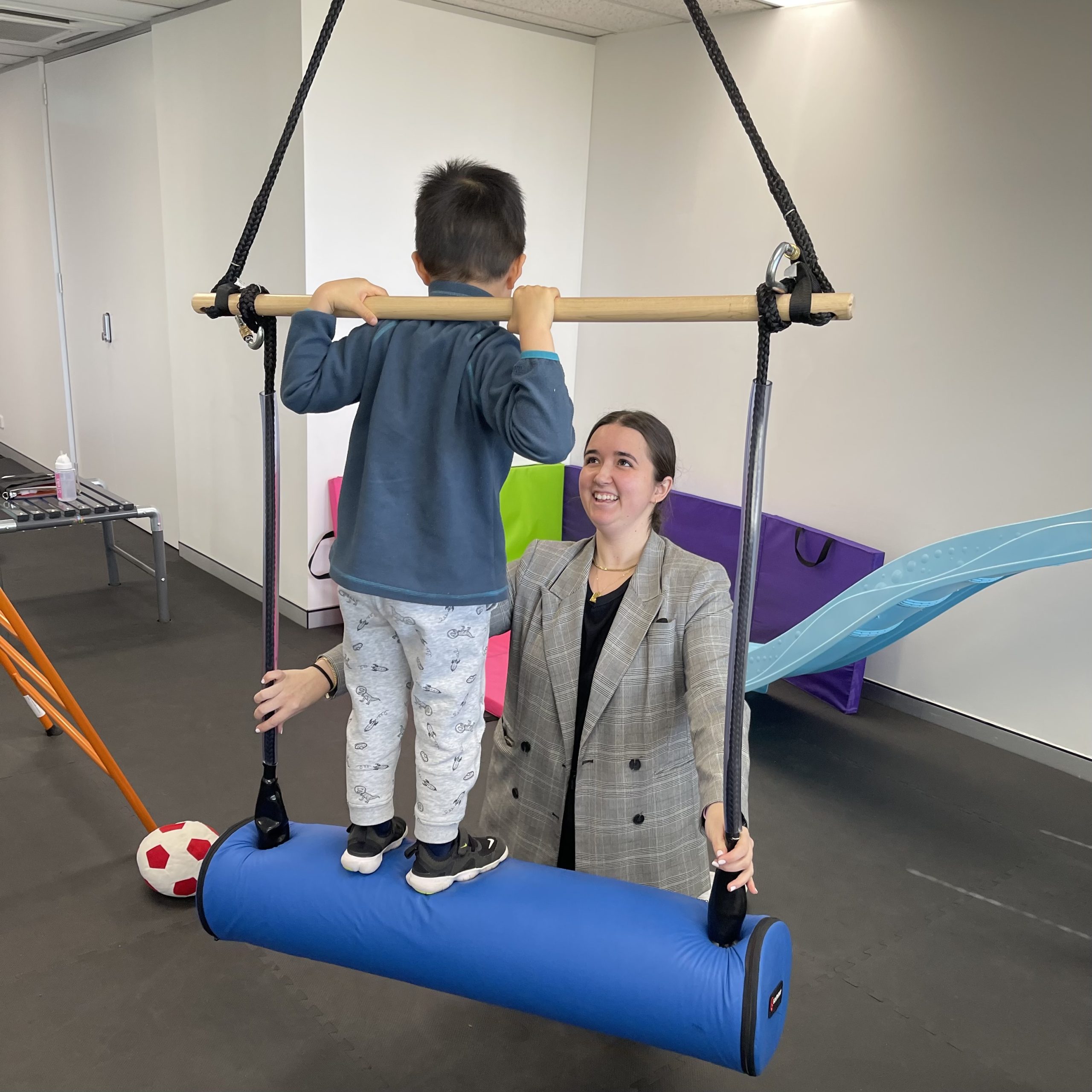
The Role of Occupational Therapy in Managing Anxiety in Children: Expert Care in Bondi Junction and Mascot
Anxiety in children is a growing concern, impacting their ability to thrive at school, in social situations, and at home. It can manifest through excessive worry, avoidance behaviours, physical symptoms, and emotional outbursts. While cognitive-behavioural therapy (CBT) and counselling are commonly recommended, Occupational Therapy (OT) offers unique and effective approaches to help children manage anxiety. At OneOnOne Children’s Therapy in Bondi Junction and Mascot, we take a holistic approach to addressing anxiety through tailored occupational therapy interventions. This blog explores the vital role of occupational therapy in managing anxiety and the benefits it provides to a child’s overall well-being.
Understanding Anxiety in Children
What is Anxiety?
Anxiety is a normal response to stress and can be helpful in certain situations, but when it becomes overwhelming and persistent, it interferes with daily activities and development. Children with anxiety may experience:
- Excessive Worry: Constantly worrying about school, social interactions, or family issues.
- Physical Symptoms: Headaches, stomachaches, muscle tension, and fatigue.
- Avoidance Behaviours: Avoiding situations or activities that trigger anxiety, such as school or social events.
- Emotional Outbursts: Frequent crying, irritability, or tantrums.
- Sleep Disturbances: Difficulty falling or staying asleep, or experiencing nightmares.
The Role of Occupational Therapy in Managing Anxiety
Occupational Therapy provides a comprehensive, child-centred approach that helps children with anxiety perform daily tasks with greater ease. Our Occupational Therapists in Bondi Junction and Mascot develop personalised strategies that address both the physical and emotional aspects of anxiety.
Sensory Integration Therapy
Children with anxiety often experience sensory overload or under-responsiveness, which can lead to discomfort and stress. Sensory integration therapy helps children process sensory information more effectively, reducing anxiety-related behaviours. Our Occupational Therapists use structured activities such as deep pressure input, tactile play, or vestibular activities to help regulate the nervous system, fostering a sense of calm and security.
Developing Coping Strategies
One of the primary goals of Occupational Therapy for anxiety is to teach children coping strategies, including:
- Deep Breathing Exercises: Teaching children to use deep breathing techniques to calm their nervous system.
- Mindfulness Techniques: Practising mindfulness exercises like guided imagery or progressive muscle relaxation.
- Self-Regulation Tools: Using stress balls, fidget spinners, or calming jars to manage anxiety.
Building Routine and Structure
Children with anxiety thrive on predictability. Our Occupational Therapists help families create structured daily routines that reduce uncertainty and anxiety. This includes:
- Visual Schedules: Using visual aids to outline daily activities and transitions.
- Time Management Skills: Teaching effective time management to reduce overwhelm.
- Consistent Sleep Routines: Establishing bedtime routines to improve sleep quality.
Enhancing Social Skills
Anxiety often makes social interactions challenging for children. Occupational Therapy helps children build social skills through:
- Role-Playing: Practising social scenarios to build confidence.
- Group Therapy: Participating in group activities that promote socialisation.
- Social Stories: Using stories to teach appropriate social behaviours and responses.
Addressing Academic Challenges
School can be a significant source of stress for children with anxiety. Our Occupational Therapists collaborate with teachers and parents to provide support and adjustments in the academic environment, such as:
- Classroom Modifications: Preferential seating or noise-reducing headphones to reduce triggers.
- Task Adaptations: Breaking down assignments into smaller steps.
- Executive Functioning Skills: Improving organisation and planning skills to manage schoolwork more effectively.
Promoting Physical Activity
Physical activity is a natural anxiety reducer, releasing endorphins that improve mood. Our Occupational Therapists encourage:
- Outdoor Play: Activities like running, climbing, or sports to promote physical health.
- Yoga and Movement Therapy: Combining physical activity with mindfulness for relaxation.
Family Involvement and Support
At OneOnOne Children’s Therapy, we believe family involvement is essential in managing a child’s anxiety. Our Occupational Therapists provide parents with the tools and knowledge to support their child, including:
- Parent Training: Teaching parents how to implement coping strategies at home.
- Communication Skills: Guiding parents on how to communicate effectively during anxious moments.
- Family Activities: Encouraging activities that promote bonding and reduce stress for the entire family.
Success Stories: Occupational Therapy and Anxiety in Action
Case Study: Emily’s Journey to Managing Anxiety
Emily, an 8-year-old girl, struggled with severe anxiety that affected her school performance and social interactions. She experienced frequent stomachaches, refused to attend school, and had regular meltdowns. After being referred to OneOnOne Children’s Therapy, Emily’s Occupational Therapist developed a tailored intervention plan that included sensory integration therapy, coping strategies, and social skills training.
Through consistent Occupational Therapy sessions in Bondi Junction, Emily learned how to use deep breathing and mindfulness to manage her anxiety. The therapist introduced a visual schedule to help Emily navigate her daily transitions, reducing anxiety triggers. Group therapy sessions also helped Emily improve her social skills and build confidence.
With support from her parents and teachers, who reinforced the OT strategies, Emily made significant progress. She became more engaged in school, built friendships, and developed effective ways to manage her anxiety. Her journey shows the transformative power of Occupational Therapy in addressing anxiety.
Conclusion: The Role of Occupational Therapy in Managing Anxiety
Occupational Therapy plays a crucial role in managing anxiety in children, offering effective strategies to help them overcome challenges. Through sensory integration therapy, coping strategies, social skills training, and family involvement, Occupational Therapists at OneOnOne Children’s Therapy in Bondi Junction and Mascot empower children to manage their anxiety and thrive in daily life.
If you believe your child could benefit from Occupational Therapy to manage anxiety, don’t hesitate to reach out. Our dedicated team of AHPRA-registered Occupational Therapists, Speech Pathologists, and Certified ESDM Therapists are here to support your child’s well-being and development.
Contact Us Today!
- Call us at (02) 8065 7837
- Email us to book a consultation
- Read more on our website to learn more about how Occupational Therapy in Bondi Junction and Mascot can help your child manage anxiety.
Together, we can help your child build confidence, resilience, and a brighter future.
